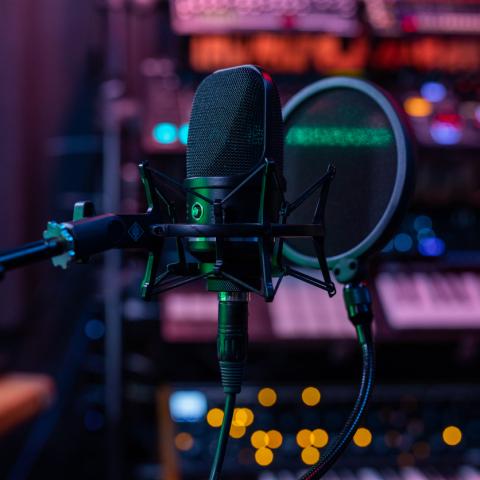Recruiting: First Minister of Scotland

By Sara Price
Yesterday’s shock announcement from Nicola Sturgeon that she is stepping down as First Minister after eight years in the job, has sent the SNP and the Scottish independence campaign down an uncertain path.
For over a decade Sturgeon has been a central and influential figure in Scottish and UK politics. But in a moment of déjà vu that brought back visions of Jacinda Ardern resigning earlier this year, Sturgeon said that she knew with her “head and heart” that it was time to go.
To date, she has been Scotland's longest serving First Minister, taking over from Alex Salmond in 2014, and driving forwards the debate around independence.
For the SNP, Sturgeon’s resignation is….
Good news if you are of the view that she had become a divisive figure in the independence movement and fresh ideas are needed.
Former First Minister, Alex Salmond, has previously said Sturgeon had “thrown away” the impetus for Scottish independence. This critique stems from a period of significant political challenges for the party, including pushing through gender recognition reforms and the placement of a trans prisoner in a women’s prison. Both issues negatively impacted the SNP’s approval ratings.
Then there’s the lack of a well-considered and clear plan on independence. The Supreme Court ruled that Holyrood doesn’t have authority to hold a referendum without approval from Westminster which resulted in Sturgeon’s defiant Plan B of using the next general election as a de facto referendum. Her departure will allow for new thinking around how the SNP seeks to secure a second independence referendum and maintain their electoral dominance.
Bad news as it provides an opening for Labour while the SNP looks to replace Sturgeon with a new leader.
Labour will be looking to strengthen their message in Scotland in order to reverse a decade-long slump in the polls. Seats north of the border are vitally important if Labour are to take power at a Westminster level.
Given Labour have, over recent months, worked to create a significantly beefed up and well-oiled party machine, the void from Sturgeon’s resignation is an opportunity they will jump on. Labour leader Keir Starmer has already said that "Labour stands ready to be the change that Scotland needs.” The ambition being to appeal to an electorate fed up with long NHS waiting lists, a gap in educational opportunities and little economic growth.
Labour moves into the next general election on a very different footing to 2015 when they were almost wiped out - losing 40 out of 41 seats in Scotland. Their recovery has been slow. In 2017 they only manged to secure seven seats and then lost one in 2019. Labour Prospective Parliamentary Candidates (PPC) are already being announced in Scottish seats, so expect to see senior Labour figures making more trips to target Scottish seats.
There are no clear successors waiting in the wings but possible contenders for the job of First Minister of Scotland include:
- John Swinney: The Deputy First Minister who, after Sturgeon, has the most experience in Holyrood. He led the party for a brief period following Alex Salmond’s resignation in 2000 and was also previously Finance Secretary and Education Secretary. Sturgeon appointed Swinney as her Deputy in 2014.
- Kate Forbes: The Finance Secretary and Gaelic speaker is well liked in the party. Her rise to prominence resulted from the surprise resignation of Derek Mackay in 2020 and her subsequent delivery of the Scottish Budget with only a few hours’ notice. She is currently on maternity leave and if she chooses to run for leader would face questions around her religious beliefs. Forbes is a member of the Free Church of Scotland whose doctrine is at odds with SNP position on gay rights and gender policy.
- Angus Robertson: The former SNP Westminster group leader and current Culture and External Affairs Secretary who doesn’t have widespread support within the party. Working in his favour is his significant experience running election campaigns and the success of the Salmond era.
- Humza Yousaf: The Health Secretary who is Scotland’s most senior Muslim politician. However, he has faced criticism over the NHS and his failure to improve NHS waiting lists.
The timeline for replacing Sturgeon is yet to be agreed but will likely last six weeks. Sturgeon will remain in post until a successor is elected and has said she will continue on the backbenches as an MSP at Holyrood. In the longer term, there has been speculation that she will seek a job in an international NGO.
What comes next:
- Sturgeon will send a resignation letter to the King
- The Scottish Parliament has 28 days to elect a replacement First Minister or face an election
- Sturgeon will remain in post until a successor is elected
- Current SNP rules state that candidates must have at least 100 nominations from members from at least 20 local branches
- The vote is a postal ballot and is one-person, one-vote.
The potential tone of the leadership election is likely to follow in the footsteps of the Conservatives battle last summer – mudslinging and infighting. With independence stalled, public services under strain and gender identity remaining a challenging topic, those seeking to stand as leader will have to brace for deep splits being aired in public.








